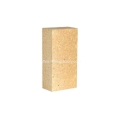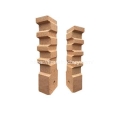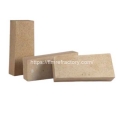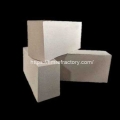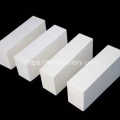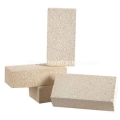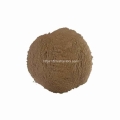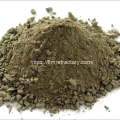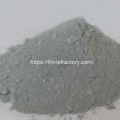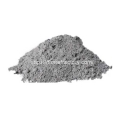- Performance. Innovation. Worldwide. Your trustworthy Refractories Manufacturing Partner--Fireramo
- +86 175 3769 7777
Contact
Contact us on WhatsApp
High Quality Refractory Bricks
Insulation Bricks for Sale
Monolithic Refractory
The main differences between sintered and fused Magnesium Aluminum Spinel
Magnesia-aluminum spinel has good corrosion resistance, strong corrosion and peeling ability, good slag resistance, abrasion resistance, good thermal shock stability, high temperature resistance and other performance characteristics. Its main uses are: first, to replace magnesium chromium sand The manufacturing of magnesia-alumina sharp stone bricks is used in cement rotary kilns, which not only avoids chromium pollution, but also has excellent spalling resistance.

Secondly, it is used to make ladle castables and ladle lining bricks, which greatly improves the corrosion resistance of the ladle lining.
Due to the small thermal expansion coefficient of magnesia-aluminum spinel, the thermal shock stability of refractory products using it as a binding phase is relatively high. In addition, because spinel has good properties such as high hardness, good chemical stability, and high melting point, and has a very strong ability to resist the erosion of various melts at high temperatures, the presence of spinel ore bodies in products improves Improve the high temperature performance of the product. The two main methods for synthesizing spinel are sintering and electrofusion. Most spinel materials are made from high-purity synthetic alumina and chemical-grade magnesium oxide, sintered in a shaft kiln and electrofused in an electric arc furnace.

The methods of synthesizing products is different
The sintering method refers to combining aluminum hydroxide, sintered alumina and other raw materials with magnesium carbonate, magnesium hydroxide and other magnesium-containing raw materials according to the requirements, finely grinding them together, pressing the balls (blanks), and burning them in a rotary kiln or vertical kiln above 1750°C. Calcined at high temperature in a kiln, the magnesia-aluminum spinel synthesized by the sintering method can be obtained.The advantage of sintered magnesia-aluminum spinel is that the process is a continuous ceramicization process, with controlled feed speed and balanced temperature distribution in the kiln, producing very uniform crystal sizes of 30-80μm and low porosity (<3%) The product.
The production of magnesia-aluminum spinel by the electrofusion method uses industrial alumina with a purity of ≥98.5% and light-burned magnesium oxide with a purity of ≥96%, and is mixed with an appropriate amount of high-purity magnesite (MgO>47%) as batch materials. Spinel clinker and AL2O3 spinel solid solution clinker with an AL2O3 content of 70% and 90% are synthesized at high temperature in the furnace, and can be processed into particles of different particle sizes, fine powder and micro powder. Its grains are well developed, dense and uniform in structure. The production of magnesia-aluminum spinel by electrofusion method is a representative intermittent operation. Large casting blocks require extended cooling time. The cooling of the casting block leads to uneven microstructure.
Due to the rapid cooling, the spinel crystals on the outside are smaller than those on the inside. The small, low melting point impurities are concentrated in the center, so the fused magnesia aluminum spinel raw materials need to be sorted and homogenized. The electrofusion method is used to synthesize magnesium-aluminum spinels, and magnesium-containing and aluminum-containing raw materials of various purity can be selected. In the raw materials for synthetic spinel, the w (Mg0) content has always been selected in the range of 35% to 50%. Too high or too low MgO content is detrimental to the melting of synthetic sand. The high viscosity makes the melt difficult to pour, while adding chromium ore is beneficial to both the melting and pouring of the melt.
The performance characteristics are different
Sintered magnesia-aluminum spinel has the characteristics of strong resistance to erosion, abrasion, peeling, good slag resistance, good thermal shock stability, high temperature resistance and other performance characteristics.
Fused magnesia-aluminum spinel has the characteristics of high temperature resistance, high body density, low water absorption, small thermal expansion coefficient, good thermal stability and strong corrosion resistance.
The product applications are different
Sintered magnesia-alumina spinel is widely used in refractory products such as alumina-magnesia spinel bricks, ladle lining bricks, ladle castables and other high-temperature zones such as cement and lime rotary kilns.
The Application of fused magnesia-aluminum spinel: It is an ideal material for manufacturing cast plates, nozzle bricks, ladle bricks and open hearth furnace bricks. It is also used for transition zone bricks in large cement kilns and medium-sized cement kilns, refractory castables and high school kiln furniture. Basic ingredients. It is widely used in steel smelting, cement rotary kiln and glass industrial kiln.
Specializing in refractory materials for over 20 years, we provide professional refractory solutions for the global high temperature industry.
Related Posts:
- Causes and solutions to cracking of castables after baking
- Enhancing the Medium Temperature Strength of Refractory Castables
- Ways to ensure the accuracy of refractory brick acceptance results
- Acceptance inspection after cement kiln construction
- Three Common Ways of Damage to the Sliding Nozzle for Ladles
Theme By Fireramo
